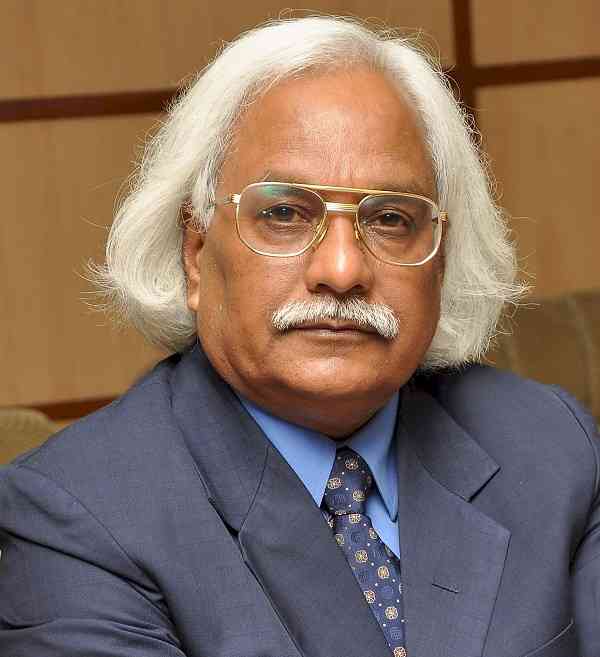Can India make it to Net Zero Carbon Emissions?
Yes. It can. But must act with a sense of great urgency

Yes, India can do it. But it need to pursue its program and policies with a renewed thrust and commitment to lead the global community with strategic actions and technology innovations. A sense of great urgency should prevail both in the government as well as society for tackling the monumental challenges of air and water pollution alongside with thoroughly reviewing the National Missions such as National Clean Air Program, NCAP. The Air Act, Water Act and Industrial Hazardous Waste Disposal Act also need a thorough revision and a fresh look is required to medical hazardous waste disposal and electronic waste regulations that are shall pose dire consequences to human and environmental health if timely attention is not paid to these new and emerging areas of national and global concerns, says Prof PB Sharma, past President of Association of Indian Universities and founder Vice Chancellor of DTU and RGPV.
Committing to NET Zero carbon emission target by 2070 by India and 2060 by China at the COP-26 Summit is too soft a commitment in the age that demands breakthrough leadership with speed leadership qualities. What could be achieved earlier in 50 years can now be achieved in 5-10 years given the firm resolve and capabilities of not just leap fogging but pole vaulting in achieving goals and missions of great value to public wellbeing and larger benefit of people. The science and technology community of India has such a capability given the positive environment that prevails in India for fostering accelerated scientific discoveries and innovation infinite. The devastating impact of climate change and the associated air and water pollution in a country like India requires a determined fight against the monumental challenges of Air and Water pollution on war footings.
In a age of mind boggling advancements in Science and Technology and with the innovative genius of Indian scientists and technologists coupled with the innovative minds of young India it is possible to develop new and innovative technologies in an accelerated mode to foster a new era of Carbon Neutral Economic growth and development in a nation of billion plus population that has already achieved several mile stones in use of renewables including solar power installations that made it possible for India to produce solar power cheaper than coal. With India’s mission of Green Hydrogen and commitment to Circular Economy, India can lead the world community but it need to change the way R&D is carried out. The focus for funding for research should be on accelerated R&D and product innovation and with effective integration of industry bridging the gap between the research lab and technology transfer to industry, says Prof PB Sharma who is the Vice Chancellor of Amity University Haryana, Gurugram.
It should not make us complacent to think that despite having around 17% of world population India’s contribution to global green house emissions is only 5%. The primary concern should be the environmental health and its direct bearing on 1.37 billion population that India has with the quality of Air and quality of water that are highly questionable and far below the safe limits set by WHO. For instance, WHO guidelines 2021 mandate PM2.5 to be below 5 microgram per cubic meter on an annual average and not higher than 15 micro gram per cubic meter averaged over 24 hours. Against this the annual average for PM2.5 for Delhi stood at 98.6 microgram per cubic meter in 2019, highest for any capital city in the world as reported by ORF occasional paper on Air Pollution by Arpan Chatterjee, December 2020. Needless to say that the AQI for Delhi these days is touching a maximum of 460 plus and a daily average of 260 at locations like Anand Vihar, Bawana and ITO.
It would make a great civic as well as a business sense to roll out fleets of EVs on roads of India without further delays as the technology is already there and with the government support and subsidies the EVs could be made a lot more cost effective than the petrol and diesel vehicles. Solar charging stations along the highways on sides of Dhabas and food courts and solar panels on every roof top in Delhi and NCR and capital cities metropolitan towns should promote solar charging by home users. Any new initiative that saves life of people and improves health of the environment should be the priority for a country like India that is sitting on the volcano of Air and water pollution. It would also be highly desirable to invest more on R&D in areas of product innovation and technology development in sustainable sciences and ecofriendly technologies. Our 5 trillion US dollars Indian economy target by 2024 shall result into great gains and global recognition provided we take lead in accelerating sustainable ecofriendly technologies in all sectors of human endeavor. Millions of jobs can be created from sustainable technology new age entrepreneurship. Mass entrepreneurship in green energy technologies, wastewater treatment and high tech agro-enterprises shall further make up for great many jobs that may be lost due to Industry 4.0 technologies that thrive on automation and intelligent robotics.
The municipalities and municipal corporations were the bodies that cared and catered for public health and local self-governance. Some how or rather these municipalities and municipal corporations have become less impactful in discharging their responsibilities towards public at large. We need to carefully ponder on the revival of municipalities and municipal corporations. The mantra for success should be to create mass awakening in the society and commitment to work for the people in local bodies like Municipalities and Municipal Corporations. Let the Government at Centre and in states of India Commit itself to major breakthroughs in tackling the monster of air and water pollution and make Mother India proud of our compliance to NET Zero Carbon Emissions.


 cityairnews
cityairnews 








